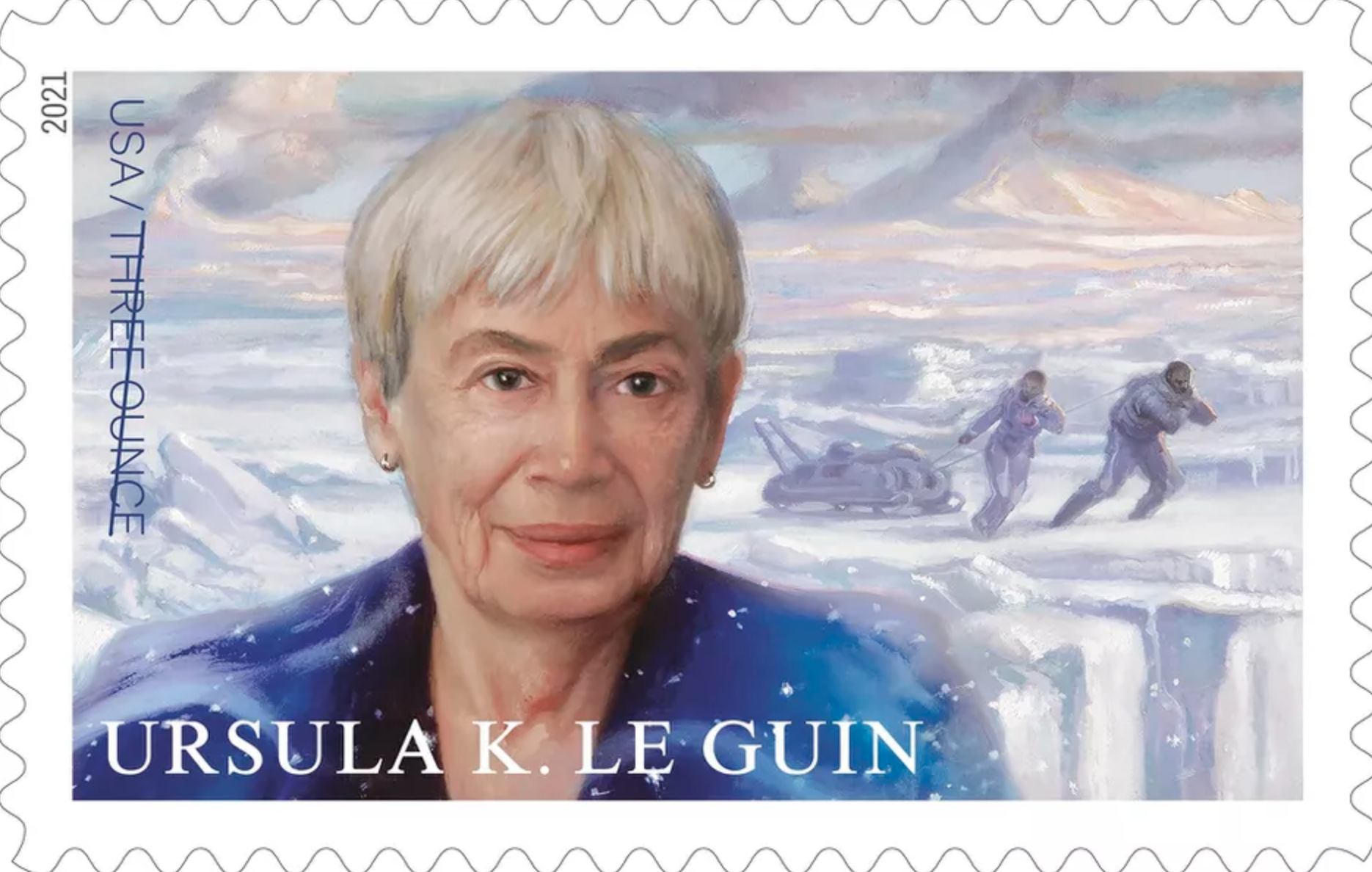
Here’s one thing that’s going right with America’s decaying postal system. They write on the USPS web site: “The 33rd stamp in the Literary Arts series honors Ursula K. Le Guin (1929-2018), who expanded the scope of literature through novels and short stories that increased critical and popular appreciation of science fiction and fantasy. The stamp features a portrait of Le Guin based on a 2006 photograph. The background shows a scene from her landmark 1969 novel “The Left Hand of Darkness,” in which an envoy from Earth named Genly Ai escapes from a prison camp across the wintry planet of Gethen with Estraven, a disgraced Gethenian politician. The artist for this stamp was Donato Giancola. The art director was Antonio Alcalá. The words “three ounce” on this stamp indicate its usage value. Like a Forever stamp, this stamp will always be valid for the value printed on it.” The postal service has not said precisely when the stamp will be released.
Would you like to support the mission of Open Culture? Please consider making a donation to our site. It’s hard to rely 100% on ads, and your contributions will help us continue providing the best free cultural and educational materials to learners everywhere.
Also consider following Open Culture on Facebook and Twitter and sharing intelligent media with your friends. Or sign up for our daily email and get a daily dose of Open Culture in your inbox.
Related Content:
Ursula K. Le Guin’s Daily Routine: The Discipline That Fueled Her Imagination
When Ursula K. Le Guin & Philip K. Dick Went to High School Together
Ursula K. Le Guin Names the Books She Likes and Wants You to Read
Ursula K. Le Guin Stamp Getting Released by the US Postal Service is a post from: Open Culture. Follow us on Facebook, Twitter, and Google Plus, or get our Daily Email. And don't miss our big collections of Free Online Courses, Free Online Movies, Free eBooks, Free Audio Books, Free Foreign Language Lessons, and MOOCs.
from Open Culture https://ift.tt/2M2PaLw
via Ilumina
What a beautiful tribute to Ursula K. Le Guin with this new USPS stamp release! Her stories have transported readers across worlds—and it shows the enduring power of mail as a creative medium. If you’re inspired by the tactile impact of a stamp, imagine sending your own custom postcards with that same personal touch. Platforms like Mail Pros USA make it easy to design, print, and mail targeted campaigns in minutes.
ReplyDeleteWhat a wonderful tribute to Ursula K. Le Guin’s legacy — the USPS stamp beautifully captures not only her portrait but also that evocative scene from The Left Hand of Darkness, where Genly Ai and Estraven journey across the frozen world of Gethen. It’s a powerful reminder of how physical mail stamps can celebrate storytelling and build connections across time and imagination.
ReplyDeleteAt Laguna Digital, we believe in the enduring impact of tangible communication. Whether it’s custom postcards, bespoke direct‑mail campaigns, or collectible commemorative mailouts, we design print pieces that resonate emotionally—just like a beloved stamp does. Celebrating literary icons through print is a form of storytelling in itself.
Thanks for sharing this inspiring piece — it’s a perfect moment to honor literary history and creative mailing possibilities.